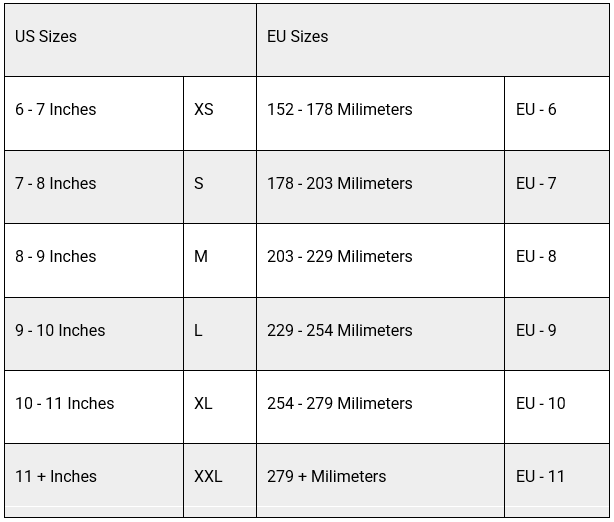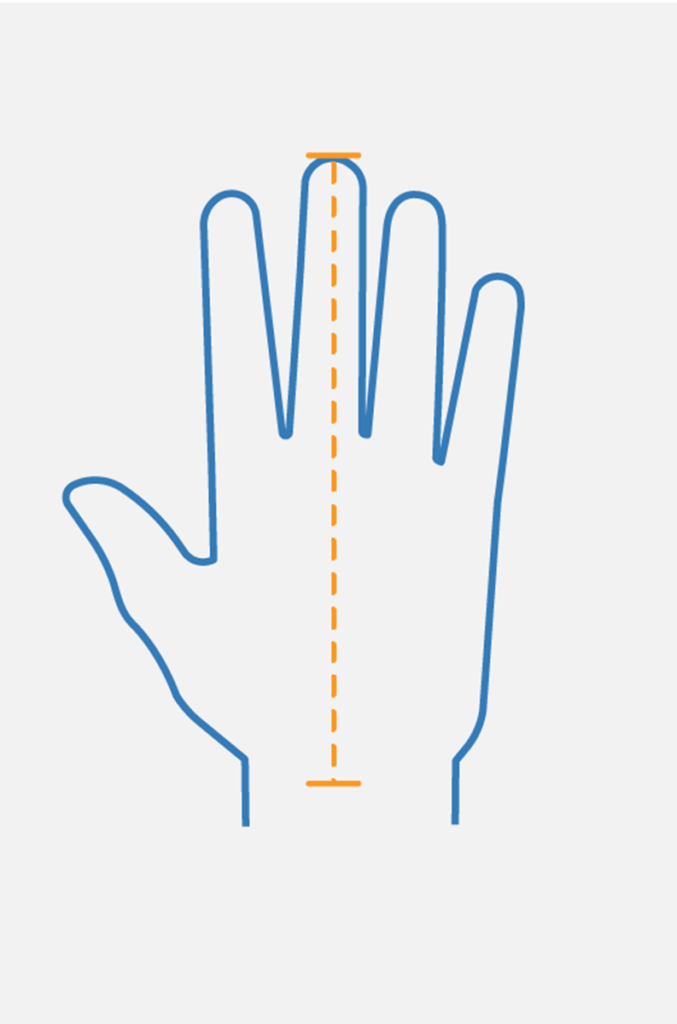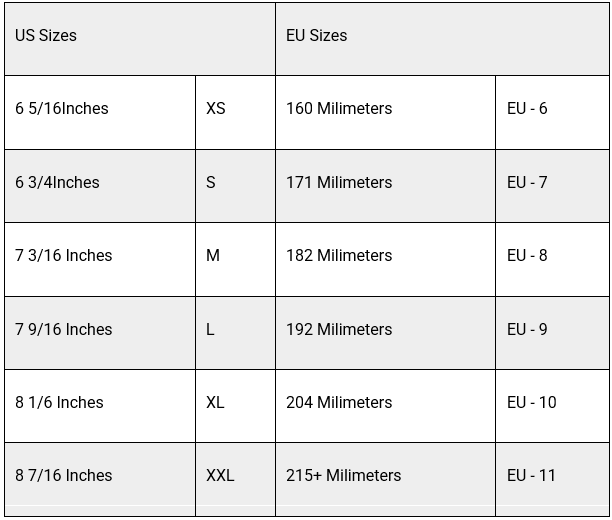Safety Glove Size Chart – Quick Tips
When a hazard assessment identifies a need for hand protection, it’s the employer’s responsibility to determine the best glove for the task. No matter the type (anti-vibration, chemical resistant, cut resistant, etc.), proper sizing comes into play. Sizing can be achieved with a hand measurement and referencing one of the glove size charts below.
Ordering gloves that are too small or large can result in job completion delays, as well as possible hand injuries. If too small, the gloves can be uncomfortable, cause hand fatigue and compromise dexterity. If the glove material is stretched beyond its capabilities, it could tear or rip easily when in use. Hand protection that is too large may literally be pulled off.
Do You Know How to Measure Your Hand for Gloves?
To get a proper fitting glove, knowing how to properly measure the hand is critical. So how do you measure for glove size? One method used to determine the correct glove size is to measure the width of the dominant hand with a soft cloth tape measure as shown below. The dominant hand measurement is preferred (right if you are right-handed and left if you are left-handed) because it is the largest hand.

If the safety gloves you are purchasing come in numbered sizes, you can correlate the measurement directly to the numerical size listed for the glove. For example, if the measurement is exactly eight inches (203 millimeters), then you would select a size eight glove. To avoid hand fatigue, order the next larger size for all measurements that are not exact inch/millimeter measurements. If the gloves you are purchasing come in lettered sizes, such as extra-small (XS), small (S), medium (M), large (L), extra-large (XL) or double extra-large (XXL), use the table below to translate the inch or millimeter measurement:

Source: Turtleskin Glove/Warwick Mills, Inc.
Another method to determine glove size is measuring the length of your hand. This is done by measuring from the bottom edge of the palm to the tip of the middle finger as illustrated below:


Source: Turtleskin Glove/Warwick Mills, Inc.
Identifying the Proper Glove Length
Since many gloves are offered in different lengths, it is important to determine the length of the glove needed. Typically, the ideal length of the glove will vary depending on the length of protection required. To ensure the correct length is ordered, use this guide as a template:

Taking the time to accurately measure and select the correct glove size is crucial. Without correct-fitting gloves, employees have a higher risk of being unprotected, which can lead to unwanted hand injuries.
Sources
Q: How do I know what glove size I need?
A: The most common method is to measure the width of your dominant hand since it tends to be the larger of the two. Take a soft tape measure and measure the circumference around the widest part of the hand. The resulting number is your hand size. Round up to nearest whole number or half size if available.
The information contained in this article is intended for general information purposes only and is based on information available as of the initial date of publication. No representation is made that the information or references are complete or remain current. This article is not a substitute for review of current applicable government regulations, industry standards, or other standards specific to your business and/or activities and should not be construed as legal advice or opinion. Readers with specific questions should refer to the applicable standards or consult with an attorney.
Source: Grainger Know How – https://www.grainger.com/know-how